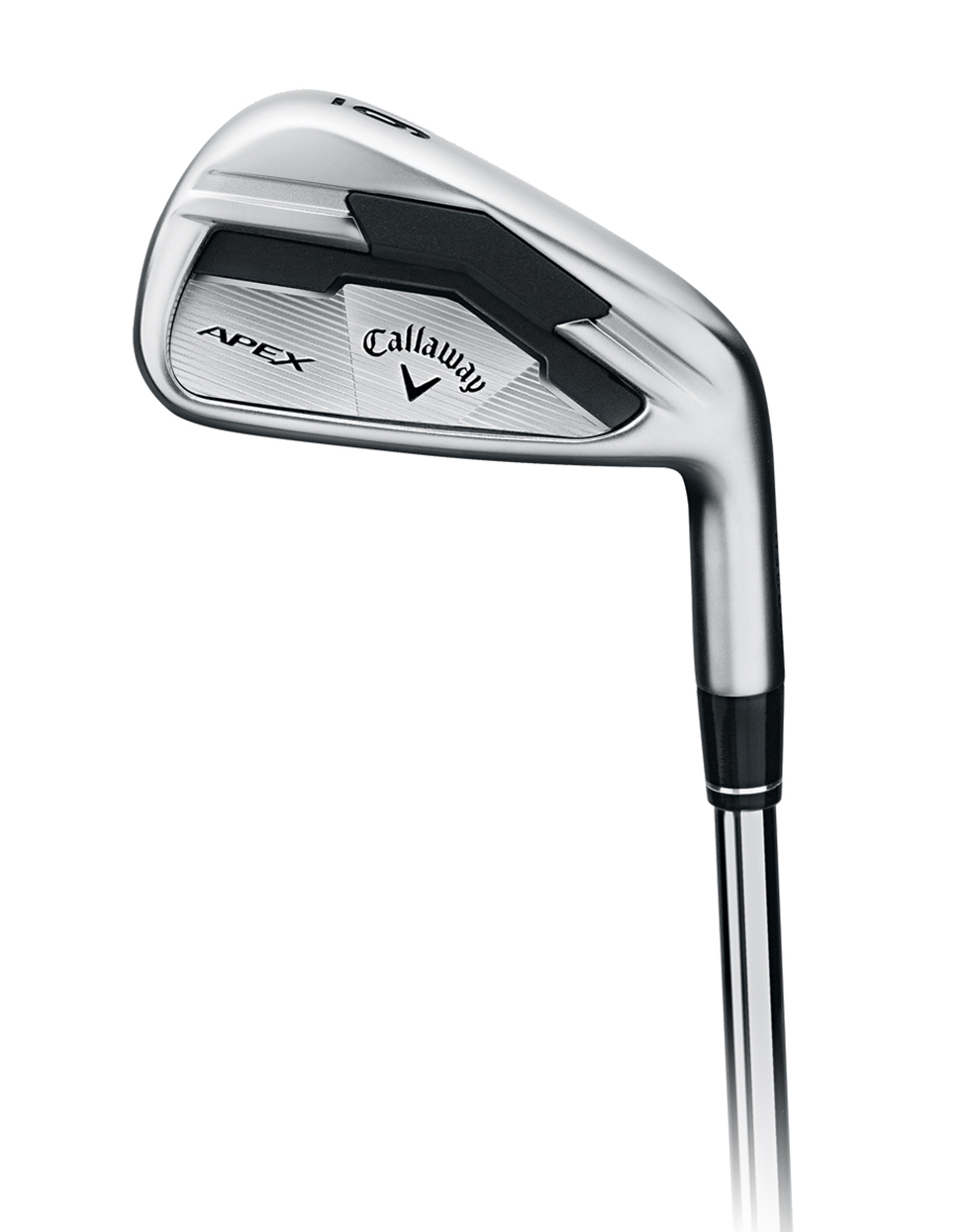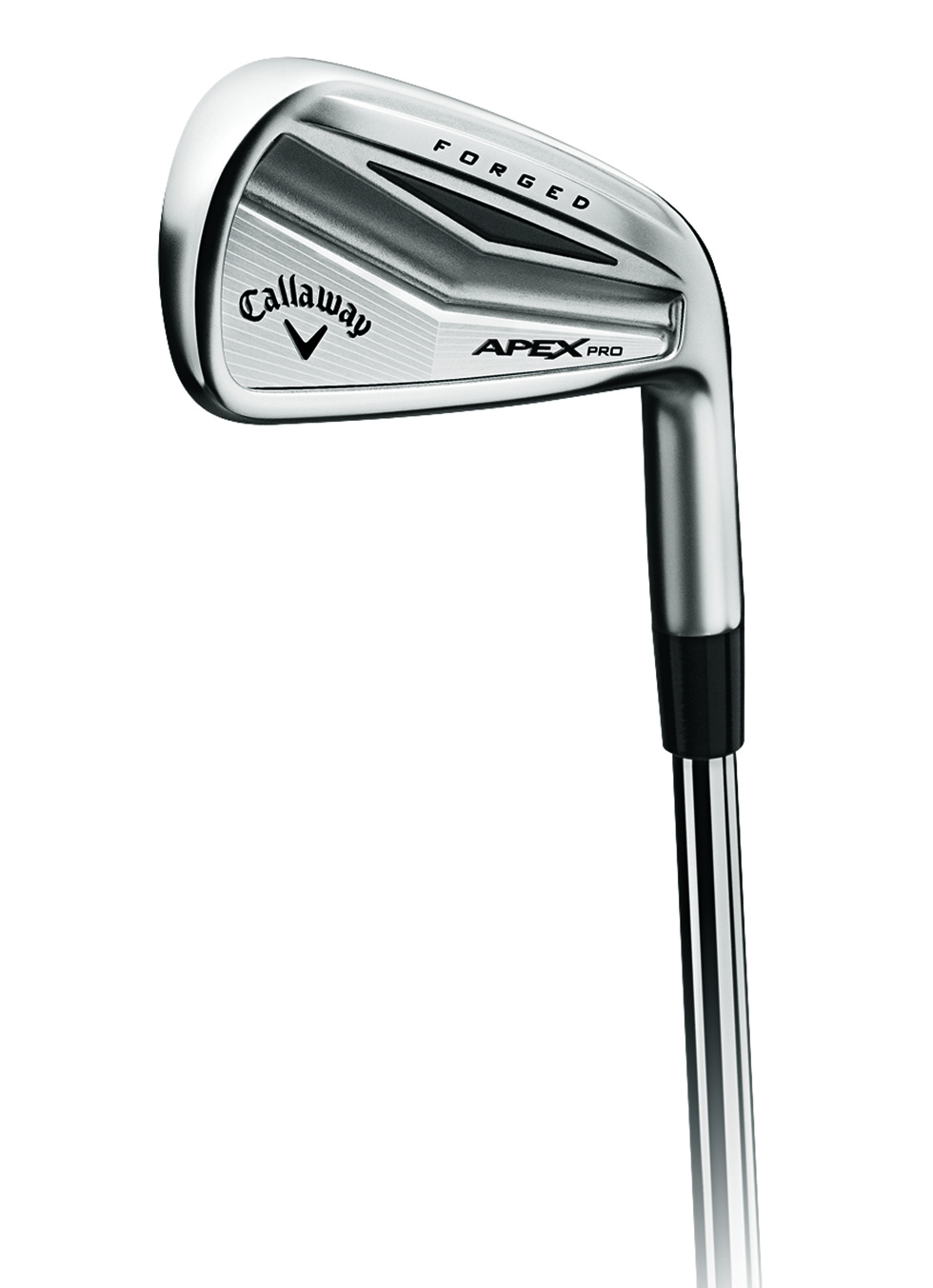 Earlier this year, Callaway Golf kind of put themselves back on the map with the release of the X-Hot series of clubs. The drivers and fairways proved to be very popular and found their ways into the bags of many players. The same was true of the X-Hot and X-Hot Pro irons. Now Callaway is following that up with the release of a new product line; the Apex.
Earlier this year, Callaway Golf kind of put themselves back on the map with the release of the X-Hot series of clubs. The drivers and fairways proved to be very popular and found their ways into the bags of many players. The same was true of the X-Hot and X-Hot Pro irons. Now Callaway is following that up with the release of a new product line; the Apex.
The new Apex irons will come in two different offerings, a standard model as well as a pro model. There is quite a few number of new features with the new sticks and according to Callaway, they are kind of going against conventional wisdom. On the forums here, we often will have members asking which clubs to choose and one question that comes up from time to time is “forged or cavity back.” Now, while that really isn’t the choice (one can get a forged cavity back or a cast blade/players iron), the general idea is that better player’s clubs tend to be forged while those that lend more forgiveness to the high handicap players tend not to be. The big idea, so to speak, with the Apex irons is that they will give all the distance and forgiveness normally seen in a GI club in a forged iron.

Callaway says that the new Apex irons are all about technology, and that starts with the multi material design. While the body of the iron is forged from 1020 carbon steel, the face is not. Instead, the face uses a 455 carpenter high strength steel face insert (the same metal used on the X Hot fairway woods). Using this steel on the face allows for higher ball speeds, which as we know, leads to more distance. Another advantage of the face insert is its weight, or more specifically, its lack of weight. Because the insert is so light, it enabled the company to move the saved weight low in the club via a tungsten insert in the sole helping to improve the launch angles of the lower irons (3-5). The forged body, on the other hand, gives the club the feel of one meant for a better player; something that players using this type of club don’t normally encounter.
The pro model is essentially the better players version of the standard and has a few key modifications. To start, the club is forged from a single piece of 1020 carbon steel and doesn’t have the 455 carpenter steel face insert that the standard Apex irons feature. That isn’t to say that these irons aren’t high tech though. They still feature a very thin face which helps to increase ball speeds and distance, as well as the tungsten inserts in the sole to provide a better CG.
The Apex Pro irons also feature a new High Performance Wide Groove profile. What the engineers at Callaway found was that better amateur and pro players were spinning the ball too much from the rough, mainly as a result of high club head speeds and this would lead to a loss of distance and consistency. The new groove profile lead to less spinning out of the rough, but also a higher launching shot, giving the better player more control.
That, however, is not all of the work that has went into the clubs. Polymer inserts have been added to dampen vibrations to produce a better feeling club and the CG of the clubs move progressively higher as you go down in the set to produce long irons that launch high and to keep shorter irons from getting too high; something better players typically want.
As far as stock shafts go, the standard Apex irons will have two different offerings; one steel and one graphite. The steel option is the high launching True Temper XP95 while the graphite option is the UST Recoil. For the first time, Callaway is offering a KBS shaft as a stock option as the mid-launching KBS Tour V will come with the Apex Pro irons. The UST Recoil is also available for the Apex Pros though custom order.

